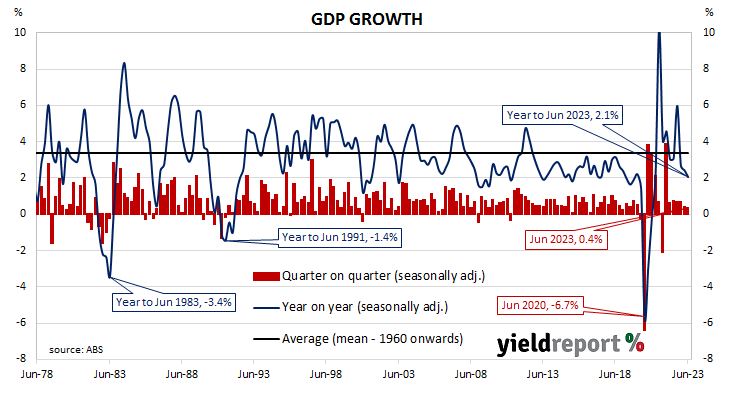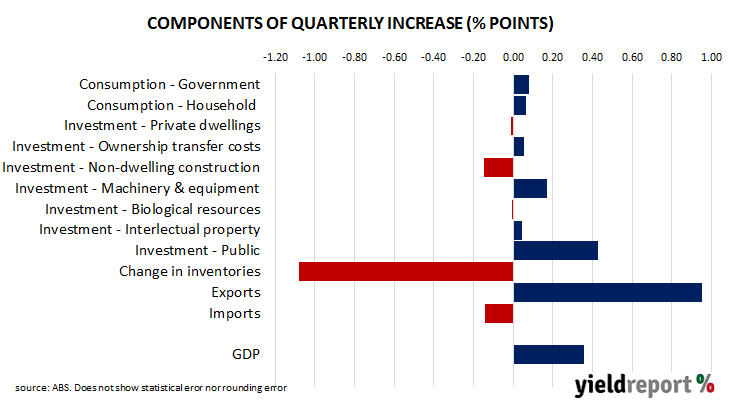Summary: Australia’s GDP up 0.4% in June quarter, in line with expectations; ANZ: moderate slowdown in growth in first half of 2023 versus 2022; Westpac: growth prospects hinge on household sector; inventories, exports major influences in quarter.
Since the “recession we had to have” as the recession of 1990/91 became known, Australia’s GDP growth has been consistently positive, with only the odd negative quarter here and there. However, Australia’s first recession in nearly thirty years was inevitable in 2020 once governments introduced restrictions which shut businesses and limited people’s movements for an extended period of time. Growth rates have been positive since then, although the September 2021 quarter proved to be the exception after restrictions were reintroduced in eastern states.
The latest figures released by the ABS indicate GDP rose by 0.4% in the June quarter. The result was in line with expectations as well the March quarter’s rise. On an annual basis, GDP expanded by 2.1%, down from 2.4% in the March quarter.
“Australia’s headline GDP print of 0.4% contained few surprises and points to a moderate slowdown in growth in the first half of 2023 versus 2022,” said ANZ Head of Australian Economics Adam Boyton. “While the pace of GDP growth over H1 2023 is a little stronger than we anticipated, it’s not materially so.”
Commonwealth Government bond yields barely moved on the day, ignoring upward movements of US Treasury yields overnight. By the close of business, the 3-year ACGB yield had inched up 1bp to 3.80%, while 10-year and 20-year yields both finished unchanged at 4.13% and 4.47% respectively.
In the cash futures market, expectations regarding further rate rises softened. At the end of the day, contracts implied the cash rate would change little from the current rate of 4.07% and average 4.085% through October, 4.125% in November and 4.14% in December. February 2024 contracts implied a 4.15% average cash rate and May 2024 contracts implied 4.11%, 4bps more than the current rate.
“Prospects for growth in the Australian economy hinge on the household sector,” noted Westpac Chief Economist Bill Evans. “A rock bottom savings rate, slowing growth in employee compensation, low confidence and no prospect of any interest rate, tax, or cost of living relief point to the economy continuing to grow well below trend.”
Inventory growth contracted by $6.0 billion, subtracting 1.1 percentage points from the quarter’s overall result, while a $5.3 billion rise in exports contributed 1.0 percentage points. Consumption growth added 0.15 percentage points while public investment added 0.4 percentage points.



